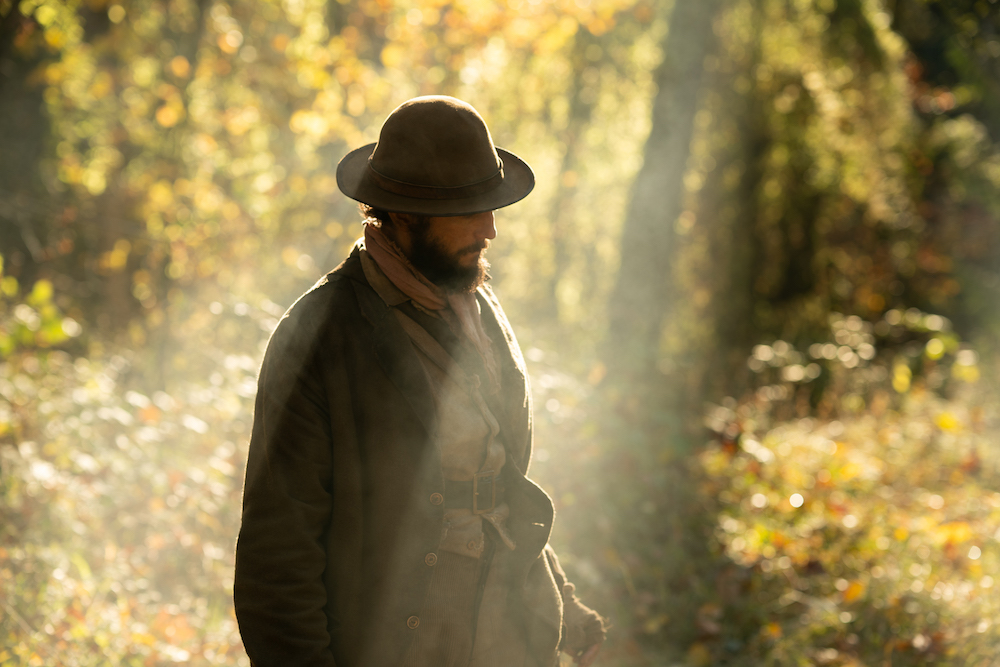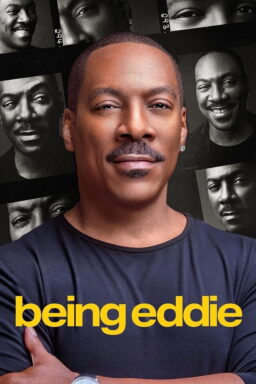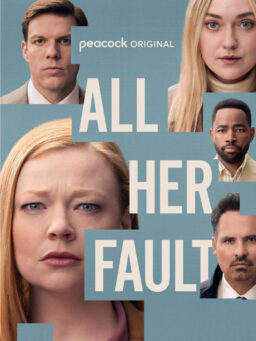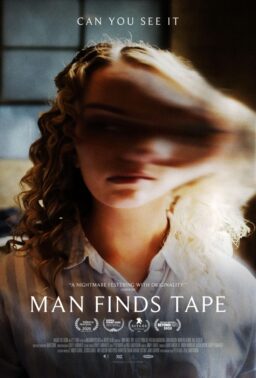Kelly Reichardt sent her actors into the woods with a survivalist expert to prepare them for her latest film, “First Cow,” the story of two men struggling in the Oregon frontier of the 1890s. In an interview, she was generous in giving credit to her collaborators on the film, reflecting the strong sense of community both on screen and off in the movies she makes.
One thing I love in your films is the way that you portray friendship, very organic but understated. So, tell me a little bit about friendship as a theme and how you talk to the actors about it.
Let’s see. Tough one. Well I think the friendship, a lot of it is informed by Jonathan Raymond’s novel, The Half Life, where the story comes from. And the actors have this kind of intimate space to work in and some domestic tasks to take on together. And then just through their general spending time together and in being in a safe place that’s not filled with the antagonism in the spaces they’re used to being in. And they’re able to just over time, be comfortable with each other and then they’re doing something together. They had a project together so that makes a further bond, I think.
A lot of that is their work really, the actors. We did send them off together. They met each other when they came to Oregon and we sent them off with a survivalist who took them out into the woods for a few days for a camping trip. And they learned some things like how to make fire without matches and sleeping in the rain.
And John Magaro had been doing some cooking for a while, for a few months leading up to the film, with the things he would have accessible to him in the period. And so, just sending them off together I think was the first way that they got to know each other. But when you’re making a film, you’re on a project together, and it kind of happens between the actors sort of at the same time it’s happening for the characters. Or really, hopefully they’re not so much characters as people.
You do such a great job of creating a sense of place.
Our location scout was Janet Weiss, formerly the drummer of Sleater-Kinney. She’s a fantastic scout as she is a fantastic drummer. So, a lot of it was her hard labor, but it is a process like everything where you’re going out every day and then returning to places. And there were places we definitely planned for and did a lot of work on, and then they were on the shoreline. And we had a couple of times where the morning where we went to shoot, the location didn’t exist anymore because the river where we are shooting, the Columbia river had risen, or the Willamette river, wherever we were shooting. So, then you have to think fast on your feet and it’s an all-out effort. Everyone’s scampering around to look for a place to save the day.
First I’m just out with Janet Weiss and then little over time, the key players of the crew are joining me, cinematographer Chris Blauvelt and Tony Guisborough, the production designer, and Chris Carroll, the assistant director.
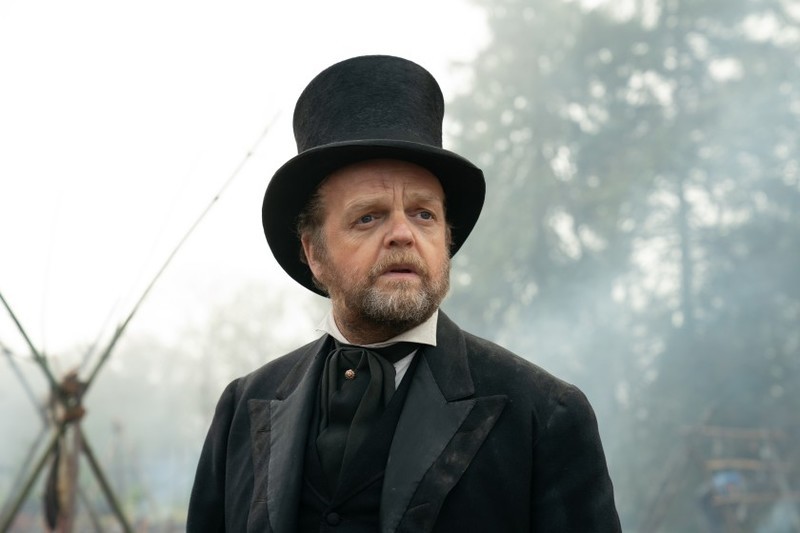
It’s not a spoiler to say that we know from the beginning where it’s going. Why was it important to begin in modern day to frame the story?
The novel also begins in the 1980s. In the film, it introduces the Columbia River to us, which was a through way for the tribes in the early 1800s that were doing trade and up and down the river. And so it was nice to open with a contemporary look at the capitalist society and the natural world and the progress of that, with this big rusty barge making its way up the Columbia River.
It is a very human story, but it is also a case study of capitalism, labor, and control of the means of production.
Yes, the beaver trade in the Northwest really was some of the first seeds of capitalism. And we see some of that in the hubris of Chief, the character played by Toby Jones. He is kind of based on John McLaughlin from the Hudson Bay Company. It would be like the CEO from Firestone going to another continent to get resources. I think capitalism is set up against the natural worlds right from the beginning and asks the question of how these two things can coexist. And the tribes that had lived on the Columbia forever and it’s a very short period of time before disease will hit them. There’s a short period of trading, but it turns bad for the indigenous people quite quickly.
Cookie and King are also capitalists. They are producing and selling pastries but made with stolen milk.
How do you start is another question. The mythology of America is that all you need is hubris and a good idea, and somehow that’s all it takes to work your way into getting a toehold into the next level of living. But they don’t really have the means to nor would anybody be open to their requests to buy the milk.
Chief is pillaging the natural resources from the indigenous people that have lived in the area forever. Cookie and King were stealing a basket of milk. The beaver trade under Chief was going to deplete the resources of the indigenous people for beaver pelts.

Why was it so important for Chief to prove how civilized his living situation was to the Captain?
Oh, just more hubris and just the idea that it’s the land of abundance and, endless possibility. So I think it’s all, some of it is just macho-ism, one-upping the captain. But with his local wife, played by Lily Gladstone, but he probably has a white wife somewhere else.
The music in the film is very gentle and organic.
Yes the music was done by William Tyler and it came after a long search of thinking about using music more from the period and also more world music that might’ve found its way to the area at the time. But nothing really was quite fitting, and then William Tyler came into the edit room with his dulcimer and some guitars and just played along to some scenes and we pretty early on realized that that was going to work out.
And so that was just a nice back and forth with him of trying to figure out exactly how much we needed and what the right tones were and all of that. But yes he created all that music for the film and that was a super lucky connection.
Were there some films that that really made you understand what your direction was going to be?
I grew up in kind of a cultural void in Miami, Florida. I moved to Boston, probably around age 18 or 19. I went to the museum school and just by chance took a class, a yearlong class in the politics of Fassbinder. And so that made a huge impression on me. Just how these sort of big political ideas could be told through the intimacy of small families or small situations.
And at the same time, I was taking an Indian cinema class and the Satyajit Ray films had the same sort of thing where they somehow told stories, big picture stories, but all about family, and just in the minuscule things that happen in a day. And so those two filmmakers are really important to me still.

